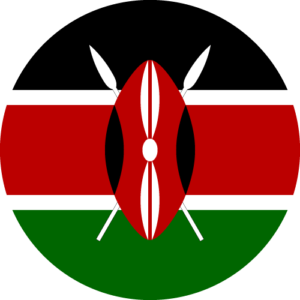The term Kikoi “KIKOY” is a Swahili term that means “wrap-around” that is intended to be worn in several ways (ClipKulture, 2023). Kikoi refers to a traditional piece of colored cloth that is used as clothing, usually around the waist, legs, or shoulders. Typically, Kikoi is made of one hundred percent cotton and is woven by machine. Kikoi cloth is indigenous to the East African coast, specifically Kenya and Tanzania. Early examples of the use of kikoi were sarongs, originally worn by Arab merchants until East Africans adopted kikoi by way of trade (Gift, 2018). Kikoi cloths were first hand-loomed by local skilled craftsmen, but now they are commonly made by a machine. (Marhoun & Sampler, 1994). Varying in many different colors, the top and bottom ends of a kikoi have contrasting colored stripes.
Kikoi cloth communicates personal style, social/political stances, and Swahili pride (Mwedekeli, 2023). Typically measuring about 44″ wide and 66″ long, kikoi cloth is a staple item for Kenyan households. Utilized as baby slings, towels, head wraps, and covering for the lower portion of the body, kikoi cloth is essential for men, women, and children. The dying process for the kikoi cloth is called batik, an Indonesian ancient traditional method of dyeing garments using wax and dye (Gaffney, 2023).
For visitors, the kikoi cloth makes a great souvenir gift as it encapsulates Kenya’s identity and can be inexpensively purchased from the mainland. In Kenya, exceptional craftsmanship using upcycled material has become a social and economic resource that is widely appreciated and heavily influenced. Similar products utilized for the same purpose by African regions nearby include Kente print fabric, Kanga, Ankara, Adire, Isu Agu, and Barkcloth (CXDQtextiles, 2023).
Kikoi cloth is special because of its durability and versatility. Kikoi cloth has longevity and the power to remain popular and sought after in many different regions, throughout centuries. This proves its convenience and adequacy.

Figure 21: Master weaver looming Kikoi cloth.
Page Author: Ritchy Isaac




